
Miguel de Cervantes Saavedra was an Early Modern Spanish writer widely regarded as the greatest writer in the Spanish language and one of the world's pre-eminent novelists. He is best known for his novel Don Quixote, a work often cited as both the first modern novel and "the first great novel of world literature". A 2002 poll of 100 well-known authors voted it the "best book of all time", as voted by the judges from among the "best and most central works in world literature".

Valladolid is a municipality in Spain and the primary seat of government and de facto capital of the autonomous community of Castile and León. It is also the capital of the province of Valladolid. It has a population of 295,639 people.

Martín Fernández de Navarrete y Ximénez de Tejada, was a Spanish noble, grandson of the Marquess of Ximenez de Tejada, knight of the Order of Malta, politician and historian. He was a Spanish senator and Director of the Spanish Royal Academy of History (1824-1844).

Benito Pérez Galdós was a Spanish realist novelist. He was a leading literary figure in 19th-century Spain, and some scholars consider him second only to Miguel de Cervantes in stature as a Spanish novelist.

The National Archaeological Museum is a archaeology museum in Madrid, Spain. It is located on Calle de Serrano beside the Plaza de Colón, sharing its building with the National Library of Spain. It is one of the National Museums of Spain and it is attached to the Ministry of Culture.
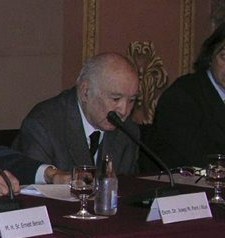
Martí de Riquer i Morera, 8th Count of Casa Dávalos was a Spanish literary historian and Romance philologist, a recognised international authority in the field. His writing career lasted from 1934 to 2004. He was also a nobleman and Grandee of Spain.

Antonio de Pereda y Salgado was a Spanish Baroque-era painter, best known for his still lifes.

Francisco Adolfo Marcos-Marín is a Spanish linguist, an Emeritus Professor of Linguistics and Translation at the University of Texas at San Antonio. Previously he was professore ordinario per chiara fama in the Università di Roma 'La Sapienza', catedrático de Lingüística General at the Universidad Autónoma de Madrid and catedrático de Historia del Español at the Universidad de Valladolid. He is a Corresponding Fellow of Academia Norteamericana de la Lengua Española and Academia Argentina de Letras, and an Honorary Citizen of San Antonio, Texas.

Macarena Gómez Traseira is a Spanish actress. She became known for her many roles in fantasy and horror films. From 2007 to 2020, she played the iconic role of Lola in the television series La que se avecina.
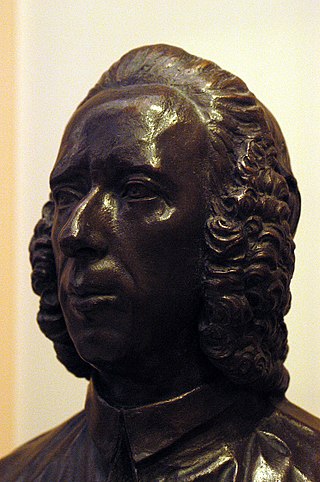
Alfonso Clemente de Arostegui y Cañavate was a Spanish bishop, writer, lawyer and diplomat.

The National Historical Archive of Spain is based in Serrano Street in Madrid. It was founded in the nineteenth century when it shared a building with the Real Academía de la Historia.

Juan de la Cuesta (?-1627) was a Spanish printer known for printing the first editions of Don Quixote de la Mancha (1605) and the Novelas ejemplares (1613), by Miguel de Cervantes, as well as the works of other leading figures of Spain's Golden Age, such as Lope de Vega.
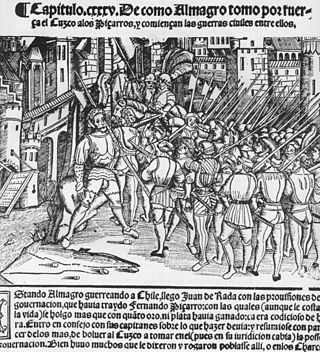
Historia general de las Indias is the account by Spanish historian Francisco López de Gómara of the Spanish conquest of the Aztec Empire. The first printing was in December 1552, in the workshop of Agustín Millán in Zaragoza, published under the title La istoria de las Indias
![<span class="mw-page-title-main">Monument to Columbus (Valladolid)</span> Monument in Plaza de Colón [es], Valladolid, Spain](https://upload.wikimedia.org/wikipedia/commons/thumb/2/29/Valladolid-Plaza_de_Col%C3%B3n-1-Monumento_a_Crist%C3%B3bal_Col%C3%B3n.jpg/320px-Valladolid-Plaza_de_Col%C3%B3n-1-Monumento_a_Crist%C3%B3bal_Col%C3%B3n.jpg)
The Monument to Columbus is an instance of public art in Valladolid, Spain. Located on the centre of the namesake Plaza de Colón, in the southeastern corner of the Campo Grande, the monument is dedicated to Christopher Columbus.
Teresa Lamas Carísimo de Rodríguez Alcalá was a Paraguayan author, writing primarily in the genre of costumbrismo. Her book Tradiciones del hogar was the first novel written by a woman in Paraguay.

Margarita of Spain was an infanta of Spain, who died in childhood.

Francisco Rodríguez Marín was a Spanish poet, paremiologist, and lexicologist.
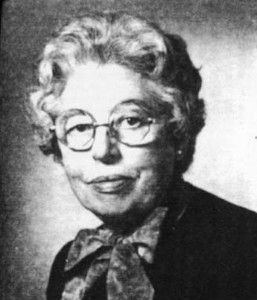
María Concepción Zardoya González, also known as Concha Zardoya, was a Chilean poet and literary critic. During her career, she published nearly 40 poetry collections and won multiple literary awards.

Hanequin de Cuéllar was a Spanish architect and sculptor who worked in Castile. In the documentation, he is named only as Hanequin and modern historians have given him the last name of Cuéllar because he lived and worked in the area of influence of Cuéllar (Segovia), and possibly to differentiate him from his father, Hannequin de Bruxelles, also an architect.







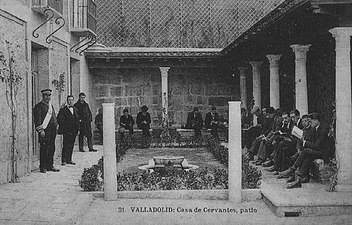


















![<span class="mw-page-title-main">Monument to Columbus (Valladolid)</span> Monument in Plaza de Colón [es], Valladolid, Spain](https://upload.wikimedia.org/wikipedia/commons/thumb/2/29/Valladolid-Plaza_de_Col%C3%B3n-1-Monumento_a_Crist%C3%B3bal_Col%C3%B3n.jpg/320px-Valladolid-Plaza_de_Col%C3%B3n-1-Monumento_a_Crist%C3%B3bal_Col%C3%B3n.jpg)



